Steve Bull's Blog, page 182
October 7, 2022
The Year in Which I Grow Our Food Pt. 3
Planning to Plant the Plot
 Deer Tongue and Romaine lettuces
Deer Tongue and Romaine lettucesWhen do we plant?
Vegetable gardens in this country are largely seen as a “summer thing”, and I believe this is because the crops people associate with vegetable gardens are mainly summer growing. These are most of the crops that we discussed in the last article. However, if we adjust what we are growing, we also have to adjust when we grow it, because not everything grows well in summer, and needs the cooler weather of spring or fall instead. This way, the summer-only garden really becomes a spring, summer, and fall garden. This is a far better use of our space and time, because the more time the garden is in use means that more food can be produced. Good news, if you think about it.
What can we plant in spring, then? We can plant things such as:
Onions (bulbing),Peas, Potatoes, Cabbage, Kale, Carrots, Swiss Chard, Radishes, Lettuce, Spinach
In summer, we can plant the “heavy hitters”, such as:
Tomatoes, Sweet Potatoes, Peppers, Summer Squash, Winter Squash, Pumpkins, Melons, Celery, Cucumbers, Beans, Eggplant, Corn, Basil, Cilantro, Dill
In fall, we can plant things similar to the spring, such as:
Peas, Cabbage, Kale, Carrots, Lettuce, Spinach, Radishes, Onions (not bulbing onions, though, bunching onions instead), Garlic-this stays in over the winter, Turnips
These are not exhaustive lists. Any seed company worth their salt (and there are a number of really good ones) will tell you which crops do best in which season. These are examples so you can see that there are a number of things you can grow and three seasons in which to do so. Doing so, however, is a bit of a ballet…
…click on the above link to read the rest of the article…
Is the Energy Transition Taking Off—or Hitting a Wall?
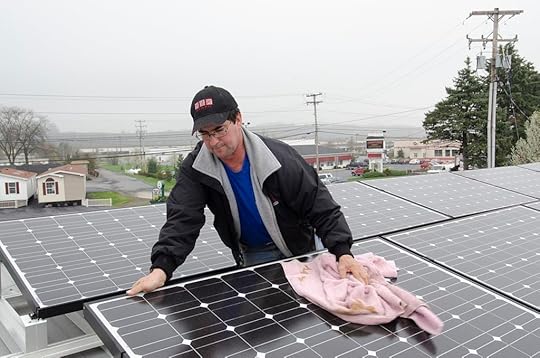 Forecast cloudy: Solar panels are wiped off for peak performance at The Wash Basket Laundromat, in Palmyra, Pennsylvania, in 2011. The business qualified for U.S. Department of Agriculture (USDA) Rural Energy for America Program assistance to add 72 photovoltaic panels to reduce electrical demand by a third. (Photo credit: Lance Cheung, USDA/Wikimedia Commons)
Forecast cloudy: Solar panels are wiped off for peak performance at The Wash Basket Laundromat, in Palmyra, Pennsylvania, in 2011. The business qualified for U.S. Department of Agriculture (USDA) Rural Energy for America Program assistance to add 72 photovoltaic panels to reduce electrical demand by a third. (Photo credit: Lance Cheung, USDA/Wikimedia Commons)With the Inflation Reduction Act, the federal government is illogically encouraging the increasing use of fossil fuels—in order to reduce our reliance on fossil fuels.
The passage of the Inflation Reduction Act (IRA) constitutes the boldest climate action so far by the American federal government. It offers tax rebates to buyers of electric cars, solar panels, heat pumps, and other renewable-energy and energy-efficiency equipment. It encourages the development of carbon-capture technology and promotes environmental justice by cleaning up pollution and providing renewable energy in disadvantaged communities. Does this political achievement mean that the energy transition, in the U.S. if not the world as a whole, is finally on track to achieving the goal of net zero emissions by 2050?
If only it were so.
Emissions modelers have estimated that the IRA will reduce U.S. emissions by 40 percent by 2030. But, as Benjamin Storrow at Scientific American has pointed out, the modelers fail to take real-world constraints into account. For one thing, building out massive new renewable energy infrastructure will require new long-distance transmission lines, and entirely foreseeable problems with permitting, materials, and local politics cast doubt on whether those lines can be built.
But perhaps the most frustrating barriers to grid modernization are the political ones. While Texas produces a significant amount of wind and solar electricity, it is unable to share that bounty with neighboring states because it has a stand-alone grid…
…click on the above link to read the rest of the article…
Living bioregionally, now
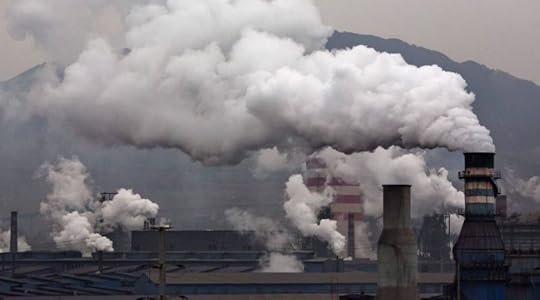 Living bioregionally, now
Living bioregionally, nowGiven the climate and other environmental stresses being experienced by ecosystems all over the world, a major rethink is taking place regarding alternative forms of governance, more adept at both preventing and mitigating these crises. One compelling idea being put forward is that of bioregional forms of governance, which start from the biophysical realities of ecosystems, which are particular and even unique to places. Such places may be as large as the Himalayan mountain chain (currently occupied and/or contested by several nation-states, including the mega-states of India and China), or as small as an isolated island in the Pacific Ocean such as Easter Island. Ashish Kothari, Juan Manuel Crespo and Shrishtee Bajpai discussed the idea in an article for Open Democracy * earlier this year, stating that “Bioregionalism is based on the understanding that the geographic, climatic, hydrological and ecological attributes of nature support all life, and their flows need to be respected.”
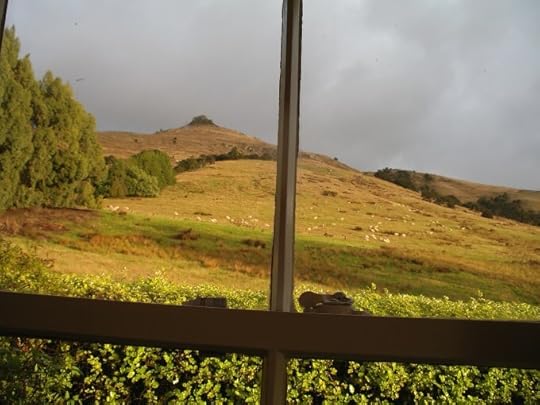 The view from Christine’s study window – a typical Canterbury hill farming landscape with exotic pasture grasses, trees and livestock
The view from Christine’s study window – a typical Canterbury hill farming landscape with exotic pasture grasses, trees and livestockBioregionalism includes all biophysical forms, and the human cultures that evolve out of specific localities. Extremely specific localities, right down (or up) to the local microbes used for fermenting and preserving unique foodstuffs, as described by Dan Saladino in his 2021 book Eating to Extinction. This includes rare and endangered beverages and cheeses made with these microbes. These can only be sampled by visiting their places of origin, where heroic efforts are being made to continue traditions of creating food from the locality. Such foodstuffs and the traditions of producing them have been in existence for thousands of years, but in the past century they have been driven almost to extinction by the globalization of the current industrial, fossil-fuel dependent food production and consumption system…
…click on the above link to read the rest of the article…
The Green Transition Part 1: The Problem with Green Capitalism
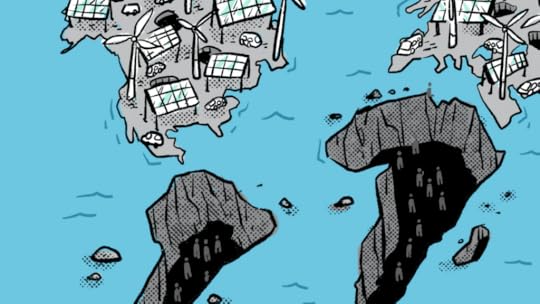
It’s clear that we need to decarbonize our economy as quickly as possible in order to avoid the worst of climate change — but carbon isn’t the only problem we’re facing. As the world moves towards renewables and away from fossil fuels as an energy source, we can’t forget that the technology and minerals behind this green transition need to come from somewhere — and that somewhere is primarily countries in the Global South.
The supply chains which carry the lithium, copper, cobalt, and other minerals essential for renewable technology from the peripheries to the imperial cores — from places like Chile and Bolivia to places like the United States and Europe — are built upon a foundation of colonialism, imperialism, hyper-exploitation, and ecocide: all essential components of our current economic system — capitalism.
In part one of this two-part series on the green transition, Upstream explores what happens when we simply paint capitalism green without addressing its fundamental global operating principles and processes. What is the dark side of the energy transition — particularly for the Global South and Indigenous communities?
In part two they will dive deeper into some solutions, but in this episode, Upstream starts their journey in the Atacama desert of Chile and ends all the way in the Arctic Circle, exploring the global extractive machine and the communities that exist on its frontiers.
You can listen to the full Upstream Documentary below to dive deeper into this topic.
…click on the above link to read the rest of the article…
October 6, 2022
The climate movement was built for a world before climate change—it’s time for a new approach
We need a mass movement that can deal with climate disasters by training people to both protect and mobilize their communities.
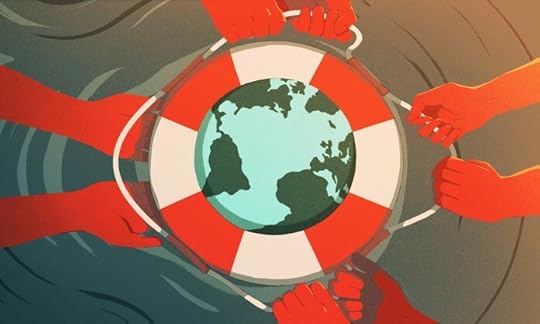
We are past the point where “stopping” climate change is really possible. With global temperature rise already above 1 degree Celsius and the window on keeping warming below 1.5 degrees rapidly closing, the consequences of decades of political inaction and corporate malfeasance are already making themselves known. Every month it seems like another part of the world is being hammered by one catastrophic climate impact or another, from flooding in Puerto Rico and Pakistan to the extreme heat that melted asphalt in Europe this past summer to the wildfires raging across western North America.
In the face of this new reality, climate organizing needs to evolve. For me, this reality really struck home last summer when extreme heat and wildfires ravaged the part of Canada that I call home. Watching devastation in my own backyard in real time, I realized that spending most of adult life as climate organizer had done little to prepare me to support my community in actually dealing with the impacts of climate change. Sure, we could organize around these impacts to demand more from the government, but that didn’t feel like enough. I spent a lot of sleepless nights thinking about this and, eventually, it led me to head back to school to become a paramedic.
Through my schooling, and now working as a first responder, I came to another realization: If we want to build the kind of mass movement that can tackle this crisis, we need to think about equipping communities with the skills and tools to deal with climate impacts…
…click on the above link to read the rest of the article…
Museletter #349: After the Ukraine Invasion
Best wishes to you, and peace to us all.
RichardAfter the Ukraine Invasion: Sobering New Global Energy-Economic-Political Terrain
Russia’s invasion of Ukraine, and the West’s response, are ushering the world into a new energy, economic, and political era. In broad outline, this new era will have less-globally-integrated energy markets, and less-secure supplies of fossil fuels. Since energy is the irreducible basis of all economic activity, this translates to a precarious global economy and a likely reordering of national alliances. We are, in short, living through a moment that may be as politically and economically transformative as the World Wars of the 20th century, though with little likelihood of an outcome anywhere near as desirable as the boom decades of the 1920s or 1950s.
EnergyWe begin with energy, since all else flows from it. The following would seem to be a small news item in comparison with other events and risks detailed further below, but it’s emblematic of the new era we’re entering.Major oil companies, including ExxonMobil, Shell, and BP, have announced that they will cease collaborating with the Russian petroleum industry, which includes state-owned energy giants Lukoil and Gazprom. This will likely have implications more far-reaching and long-lasting than President Biden’s ban on imports of Russian oil and gas to the US……click on the above link to read the rest of the article…A Banking Crisis Looms
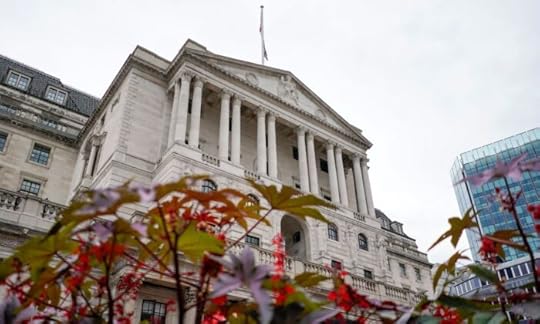 General view of the Bank of England, in the financial district known as The City, in London on Aug. 2, 2021. (Alberto Pezzali/AP Photo)A Banking Crisis Looms
General view of the Bank of England, in the financial district known as The City, in London on Aug. 2, 2021. (Alberto Pezzali/AP Photo)A Banking Crisis LoomsMy columns have turned rather apocalyptic of late, but for a valid reason. Just this week, we got confirmation that our financial system is, again, on the brink of collapse, when the Bank of England (BOE) was forced to enact, de facto, a bailout of the pension funds of the United Kingdom.
On Sept. 28, around noon, the Bank of England stepped (back) into the gilt markets and started buying government bonds with longer maturities to stop the collapse in their value, which could have caused the financial system to become unhinged. Pension funds were faced with major margin calls, which threatened to cause a rapidly cascading run on their liabilities, as trust in their liquidity and solvency would have become questioned by a widening circle of investors and customers.
Effectively, the BOE stepped in to limit the vicious circle of margin calls faced by pension funds because of the crashing values of the gilts.
Without the BOE intervention, mass insolvencies of pension funds—and thus most likely other financial institutions—could have commenced that afternoon. It’s obvious that if one of the major financial hubs of the world, the City of London, would face a financial panic, it would spread to the rest of the world in an instant.
It looks as though the global financial system was pulled from the brink of collapse, once again, by central bankers. However, this was only a temporary fix.
It’s now clear that an outright financial collapse threatens all Western economies, because if pension funds, often considered very dull investors because of their risk-averse investing profile, face a threat to their insolvency, it can happen to any other financial institution…
…click on the above link to read the rest of the article…
OPEC announces the biggest cut to oil production since the start of the pandemic
OPEC+ said Wednesday that it will slash oil production by 2 million barrels per day, the biggest cut since the start of the pandemic, in a move that threatens to push gasoline prices higher just weeks before US midterm elections.
The group of major oil producers, which includes Saudi Arabia and Russia, announced the production cut following its first meeting in person since March 2020. The reduction is equivalent to about 2% of global oil demand.
The price of Brent crude oil rose 1.5% to more than $93 a barrel on the news, adding to gains this week ahead of the gathering of oil ministers. US oil was up 1.7% at $88.
The Biden administration criticized the OPEC+ decision in a statement on Wednesday, calling it “shortsighted” and saying that it will hurt low and middle-income countries already struggling with elevated energy prices the most.
The production cuts will start in November, and the Organization of Petroleum Exporting Countries (OPEC) and its allies will meet again in December.
In a statement, the group said the decision to cut production was made “in light of the uncertainty that surrounds the global economic and oil market outlooks.”
Global oil prices, which soared in the first half of the year, have since dropped sharply on fears that a global recession will depress demand. Brent crude is down 20% since the end of June. The global benchmark hit a peak of $139 a barrel in March after Russia’s invasion of Ukraine.
OPEC and its allies, which control more than 40% of global oil production, are hoping to preempt a drop in demand for their barrels from a sharp economic slowdown in China, the United States and Europe.
…click on the above link to read the rest of the article…
Futures That Work
Among the most curious features of the current predicament of industrial society is that so much of it was set out in great detail so many decades ago. Just at the moment I’m not thinking of the extensive literature on resource depletion that started appearing in the 1950s, which set out in painstaking detail the mess we’re in right now. I’m thinking of those writers who explored the decline and fall of past civilizations, in the vain hope that ours might manage to avoid making all the usual mistakes. In particular, I’m thinking of Arnold Toynbee.
Toynbee’s all but forgotten these days, but three quarters of a century ago his was a name to conjure with. His gargantuan 12-volume work A Study of History set out to trace the histories of all known civilizations and, from that data set, determine the factors that drove the rise and fall of human societies. One- and two-volume abridgements leaving out most of the supporting data were widely available back in the day—my parents, who were not exactly highbrow East Coast intellectuals, had a copy on a bookshelf in the family room when my age was still in single digits. Plenty of academic historians denounced Toynbee, but a great many people read his work and saw the value in it.Those days are of course long past, but there’s an interesting twist to the disappearance of his ideas from the collective dialogue of our time. Those ideas weren’t rejected because they turned out to be wrong. They were rejected because Toynbee was right.
To summarize an immense body of erudite historical analysis far too briefly, Toynbee argued that new human societies emerge when a human society is faced with a challenge it can’t meet using its previous habits of thought and action…
…click on the above link to read the rest of the article…
Logging industry targeted B.C. old-growth forests for more than a century, SFU study finds
Ken Lertzman’s paper shows between 1860 and 2016, 87 per cent of logging took place in old-growth forests
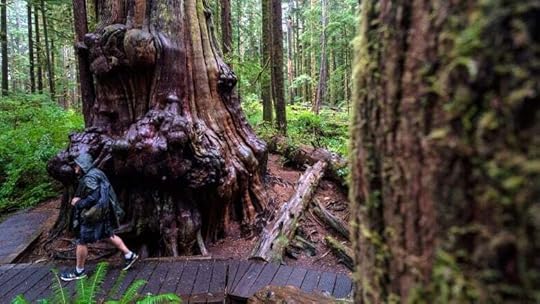 A man walks past an old growth tree in Avatar Grove near Port Renfrew, B.C. A new paper published by Simon Fraser University professor Ken Lertzman shows that decades of logging on the province’s Central Coast targeted the highest-value forests first. (Jonathan Hayward/The Canadian Press)
A man walks past an old growth tree in Avatar Grove near Port Renfrew, B.C. A new paper published by Simon Fraser University professor Ken Lertzman shows that decades of logging on the province’s Central Coast targeted the highest-value forests first. (Jonathan Hayward/The Canadian Press)The worsening effects of climate change are compounding the historical loss of British Columbia’s old-growth forests, says the co-author of a new paper that shows decades of logging on the province’s Central Coast targeted the highest-value forests first.
“History tells us that we have really depleted these high-value elements of the landscape and that we can’t keep going,” said Ken Lertzman, professor emeritus at Simon Fraser University’s school of resource and environmental management.
“At the same time, [forests] have never been under greater threat from natural disturbances that are driven by a changing climate.”
Some forests have been set aside for logging because of their ecological and cultural value, only to be scorched by increasingly severe wildfires, he added.
That’s the reality today’s policy-making must reflect when it comes to determining how B.C.’s forests will be valued and used in years to come, Lertzman said.
Vital old growth first to be cut
The paper published Monday in the peer-reviewed journal Proceedings of the National Academy of Sciences examined more than 150 years of logging across 8,550 square kilometres of forests around Bella Bella on B.C.’s Central Coast.
Of nearly 570 square kilometres logged in the area between 1860 and 2016, 87 per cent of that logging took place in old-growth forests starting in 1970, it shows.
…click on the above link to read the rest of the article…



